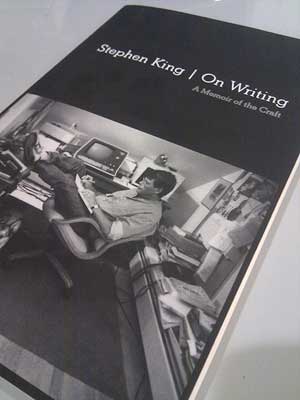
Source: Cee Lo Green #thevoice,
stevgarfield, Flickr

Source: Christina Aguilera (2006),
Rafael Amado Deras, Wikimedia

Source: Adam Levine from Maroon 5
cropped, Donna Lou Morgan USN, Wikimedia

Source: BlakeSheltonApr10,
Keith Hinkle, Wikimedia
In NBC’s reality show The Voice, musician judges Christina Aguilera, Cee Lo Green, Adam Levine, and Blake Shelton sit with their backs to a vocalist in a blind audition. One judge casts a vote of approval, and all spin around to face the singer. The audience members, who have seen the singer all along, anticipate the judges’ reactions. The passive voice in grammar is similar to this blind audition; this verb construction doesn’t make clear to the reader who is acting, just as the judges don’t know who is singing. Although hiding identities might work well for a hit reality show, the same is not always true of writing.
In grammar, voice indicates a relationship between the subject and the action expressed. Voice comes in two forms. First there is the active voice, which describes the subject “acting.” With an active verb, the subject of the sentence is clearly doing something.
Active Voice: The tenor belted out the song.
In the other, the passive voice, something is being done to the subject of the sentence. The subject is “passively” undergoing the action of the verb. Sentences written in the passive voice include a form of “to be” and the past participle of a verb. A “by” phrase naming the performer of the action often follows.
Passive Voice: The song was belted out by the tenor.
The active-voice sentence emphasizes the singer, whereas the passive-voice sentence emphasizes the song. With active voice, the tenor takes center stage; with passive voice, the tenor takes a backseat. Even though “belted” is an action verb, it loses some of its energy in the passive-voice construction.
The normal word order of English sentences is subject-verb-object. The subject acts upon the object.

Active Voice: The tenor belted out the song.
The doer of the action, the tenor, is to the left of the main verb. We will call the doer in a sentence the “actor,” and this first position is center stage. The actor gets all the attention when he, she, or it comes first.
The passive voice shakes up the normal subject-verb-object order.

Passive Voice: The song was belted out by the tenor.
In passive voice, the actor is forced backstage to the end of the sentence. In this backward construction, the acted upon is in the actor position, and the actor is in the acted-upon position. The action is performed upon the subject and the object becomes the subject.
In On Writing, novelist Stephen King doesn’t mince words in expressing his dislike for the passive voice.

Source: On Writing, snck, Flickr
You should avoid the passive tense. I’m not the only one who says so; you can find the same advice in The Elements of Style. Messrs. Strunk and White don’t speculate as to why so many writers are attracted to passive verbs, but I’m willing to. . . . The passive voice is safe. There is no troublesome action to contend with.
You might be too timid to read King’s horror genre at home alone on Halloween night, but even if you are, you don’t have to be a timid writer.
Notice that King says we should avoid the passive voice; he doesn’t say never to use it. This is because the passive voice is not wrong, and we shouldn’t bury it entirely. In fact, sometimes the passive is even preferable to the active voice.
For instance, the passive voice comes in handy when you don’t want to be accountable. Politicians may demonstrate this use of the passive voice by saying “mistakes were made.” By speaking passively, they conveniently distance themselves from blunders. In that form of the passive voice, the authors fail to name themselves as those who messed up. They get around fault by avoiding the pronouns I and we. Here are some other evasive sentence beginnings:
- It was apparent.
- It has been noted.
- It was decided.
- It is known to be.

Source: Sideswiped, epc, Flickr
Anyone can resort to the passive voice to avoid taking responsibility. Which voice would you use to tell your parent about your first car accident?
Passive Voice: Dad, the right side of the car was damaged.
Active Voice: Dad, I made a mistake and clipped some mailboxes, severely damaging the right side of your expensive new car.
In the first sentence, you get less of the blame. “By me” is implied, but you manage not to say it out loud. When you use the passive voice to disguise the true subject, the culprit (you in this case) might hope to get a reduced sentence. On the other hand, when a good thing happens, you prefer the accountability of the active voice. Wouldn’t you say “I got an A” rather than “An A was received by me”?
The passive voice is justified in some occasions. Consider the following:

Source: IMG_0590.JPG, Billiard, Flickr

Source: Bicycle Parking PB063380, rob.guettler, Flickr
- The person doing an action may be unknown.
The song was recorded on gramophone at 45 rpm. (Here, the artist may be unknown.)
The bicycle was stolen. (The thief is stealthy and didn’t get caught.)

Source: 070305, COCOEN daily photos, Flickr

Source: Damaged UPS delivery, Travelin’Librarian, Flickr
- The person acting may be irrelevant, or it may not be important to say who did the action.
An error on the exam has been brought to my attention. (The name of who pointed out the error doesn’t matter.)
The package was delivered. (Who delivered it doesn’t matter.)

Source: HopeDiamond (1), Jyothis, Wikimedia

Source: CRIME SCENE DO NOT CROSS, voteprime, Flickr
- In some cases, the object may be more important.
Donations were made in the sum of $50,000. (Donations and the amount given are important for this sentence; we will assume there were many givers or that they were anonymous.)
The body was moved after the victim was killed. (The fact that the body was moved is important here; we may not know who moved it.)
Despite these exceptions, you should use the active voice most of the time because it’s clearer and more direct. Another compelling reason to write in active voice is that it’s more concise. You can say more with fewer words. The following activity demonstrates that economy.
 Use your notes to rewrite each sentence into the active voice. Create a version of the sentence that uses fewer words to say the same thing. The number of words in each sentence has been listed for you. After you rewrite the sentence, count how many words you used. When you are finished, check your understanding to see possible responses.
Use your notes to rewrite each sentence into the active voice. Create a version of the sentence that uses fewer words to say the same thing. The number of words in each sentence has been listed for you. After you rewrite the sentence, count how many words you used. When you are finished, check your understanding to see possible responses.- The note was dropped by the singer. (7)
- A vocal mentor was chosen by the contestant. (8)
- My homework has been eaten by the dog. (8)
- It has been decided that downsizing the workforce is the only way to save the company. (16)
- The sightseers were picked up by the tour bus. (9)
Sample Response:
- The note was dropped by the singer. (7)
The singer dropped the note. (5) - A vocal mentor was chosen by the contestant. (8)
The contestant chose a vocal mentor. (6) - My homework has been eaten by the dog. (8)
The dog ate my homework. (5) - It has been decided that downsizing the workforce is the only way to save the company. (16)
We decided that downsizing the workforce is the only way to save the company. (14) - The sightseers were picked up by the tour bus. (9)
The bus picked up the sightseers. (6)
You don’t want to be wordy or get in the practice of withholding information from your readers by using the passive voice. If you know who did the action, say who it was. Look for timid, passive-voice sentences in your writing and rewrite them into the active voice.
If you are not clear whether a sentence you have written is in the passive voice, ask yourself whether the subject is acting or being acted upon. If an acted-upon subject shows up, try to flip the sentence around to get the actor in the right place. Also ask yourself if the sentence clearly identifies the performer of the action. If not, a passive sentence may have been written by you.